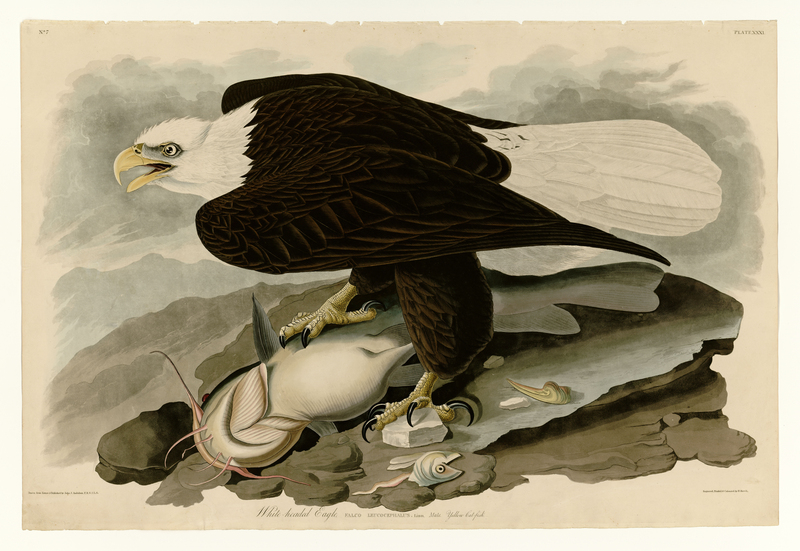|
| Query: Large white | Result: 509th of 2105 | |
bald eagle (Haliaeetus leucocephalus)
| Subject: | bald eagle (Haliaeetus leucocephalus)
| | Poster: | Wiki Photos (---@---.---)
| |

| Resolution: 4032x2776
File Size: 8751370 Bytes
Upload Date: 2017:02:20 23:12:17
|
ERROR : Server Busy(-1105)
ERROR : Server Busy(-1105)
bald eagle (Haliaeetus leucocephalus)
Feeding on catfish and other various fishes. Painted by John James Audubon
Description
Plate 31 of Birds of America by John James Audubon depicting White-headed Eagle.
Date 1827-1838
Source University of Pittsburgh http://images.library.pitt.edu/cgi-bin/i/image/image-idx?view=entry;cc=audimg;entryid=x-aud0031
Author John James Audubon (1785–1851) https://en.wikipedia.org/wiki/John_James_Audubon
Source: https://commons.wikimedia.org/wiki/File:31_White-headed_Eagle.jpg
The bald eagle (Haliaeetus leucocephalus, from Greek hali "sea", aiētos "eagle", leuco "white", cephalos "head") is a bird of prey found in North America. A sea eagle, it has two known subspecies and forms a species pair with the white-tailed eagle (Haliaeetus albicilla). Its range includes most of Canada and Alaska, all of the contiguous United States, and northern Mexico. It is found near large bodies of open water with an abundant food supply and old-growth trees for nesting. Order: Accipitriformes, Family: Accipitridae, Genus: Haliaeetus, Species: Haliaeetus leucocephalus (Linnaeus, 1766), Synonyms: Falco leucocephalus Linnaeus, 1766.
|
Comments |
|---|
| | Guest |
|
Scientific Name: Haliaeetus leucocephalus (Linnaeus, 1766)
Common Names: Bald Eagle
French: Pygargue à tête blanche German: Weißkopf-Seeadler Spanish: Pigargo americano
Taxonomy: Falco leucocephalus Linnaeus, 1766, America, Europe = South Carolina, USA. |
^o^
Animal Pictures Archive for smart phones
^o^
|
|
|